The word “detox” is often associated with green juice cleanses and gimmicky laxative products. Our bodies are naturally designed to handle the elimination of bodily toxins, but sometimes processes slow or get stuck. Luckily, “cleanses” and “detox pills” don’t need to be in your repertoire. Burdock root, milk thistle, nettle, and dandelion are natural and effective herbs for detoxification that can safely support your body in eliminating toxins.
The importance of occasional detoxification
People often think of detoxing as an answer to the pressures of diet culture and general over-indulgence; it’s a quick fix after nutritional “misbehaving.”
Instead of using synthetic detoxification products or binging on juice cleanses that don’t actually support your body’s natural detoxification processes, turn to herbs. Herbal supplements can safely guide our natural processes and support the body’s detoxification pathways. An occasional detox is vital to flush out toxins and ensure the body’s elimination pathways work optimally. Herbalists utilize these methods as an alternative to harsh detoxes that are made to purge and deplete your body of nutrients.
Detoxing via herbs is essential in supporting the function of our skin, liver, digestive tract, kidneys, and lymphatic system. These herbs are left as unprocessed as possible, supporting these organs to keep working as intended. These herbs can also help with inflammation, skin health, and liver support.
Note: Herbal supplements are not intended to serve as a sole method for detoxification. Healthy lifestyle habits like a clean diet, regular exercise, and sleep support your body’s detoxification efforts.
Top 8 herbs for detoxification
1. Dandelion
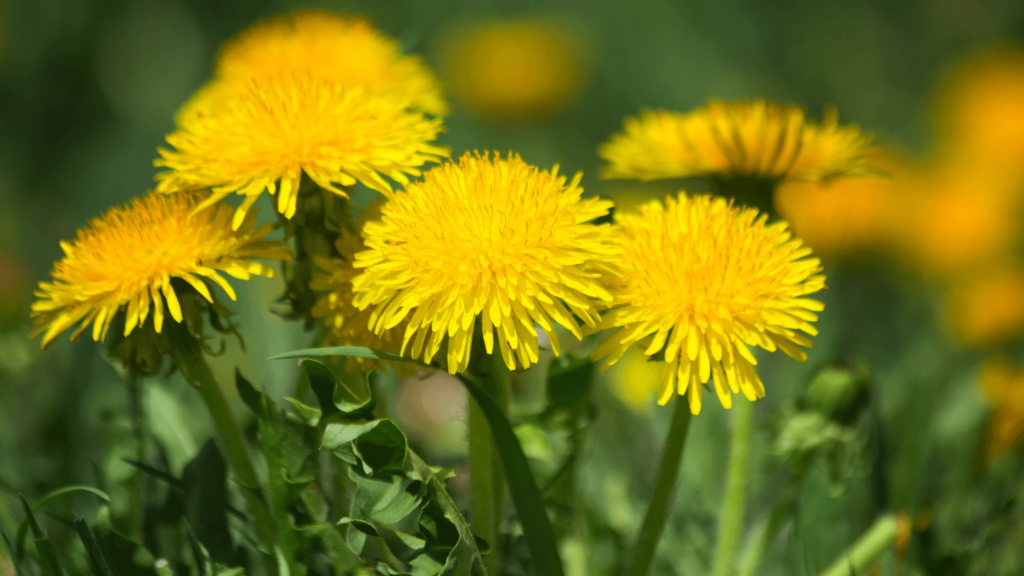
Many people know dandelion (Taraxacum Officinale) as a pesky weed, but its powerful properties make it one of the best herbs for detoxification. Dandelion is particularly effective in detoxing the liver via its strong diuretic and detoxifying actions, making it an excellent choice for cleansing toxins from the body. By boosting bile production, it helps detox the liver, gallbladder, kidneys, and blood and also regulates bowel motions.
- The science: A 2021 study shows that dandelion can protect your liver from the stress from oxidative stress and damage caused by free radicals. The protection measured in participants aids in liver function and helps protect against constant toxin exposure.
- How to incorporate it into your routine: Dandelion roots, leaves, and stems can all be used. Add dandelion to your diet via dried root, tea, or dandelion greens to your salads.
- Precautions: Dandelion could increase stomach acid and cause heartburn in some users. People with gallstones, gallbladder issues, or kidney problems should consult a professional before consumption.
2. Cilantro
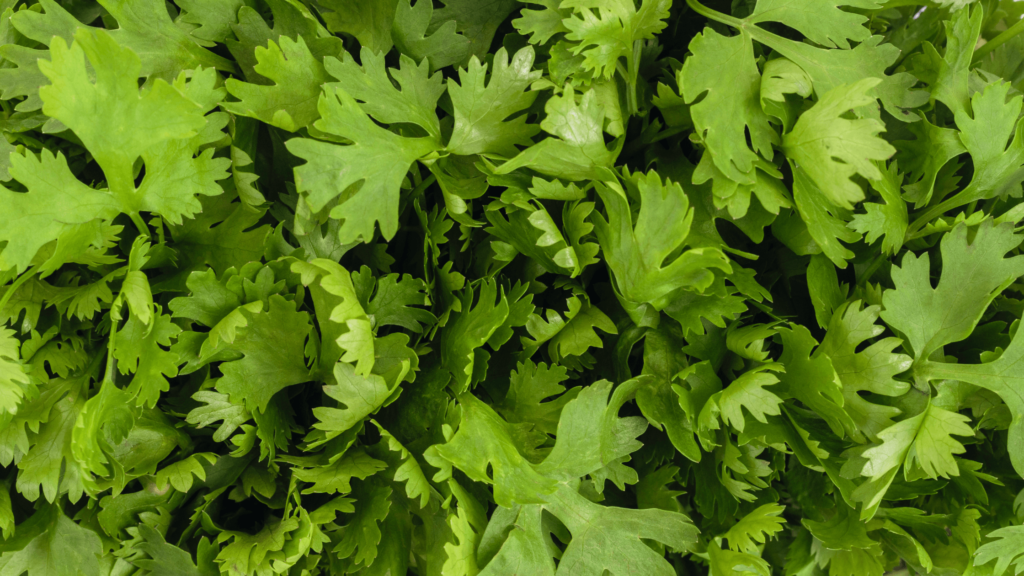
Cilantro is commonly found in foods like salsa or tacos, but aside from being a delicious garnish, it also acts as a detoxifier for heavy metals that enter the body.
- The science: Cilantro naturally detoxifies by chelating heavy metals in the tissues and making them soluble. This process allows the body to flush them out more easily, ridding them of their harmful effects.
- How to incorporate it into your routine: Add cilantro to smoothies, salads, and burritos for freshness and detox benefits. You can also try cilantro extract.
- Precaution: People with low blood sugar should be mindful of their cilantro intake. Cilantro contains enzymes that lower blood sugar, so it should be eaten in moderation if you have a blood sugar sensitivity.
Note: Toxicity from heavy metals is increasingly becoming a concern. Contaminated food, water, environmental pollutants, and other personal products could put you at risk for heavy metal exposure. Some metals, like lead, mercury, and aluminum, can accumulate in your body and increase health risks.
3. Milk thistle
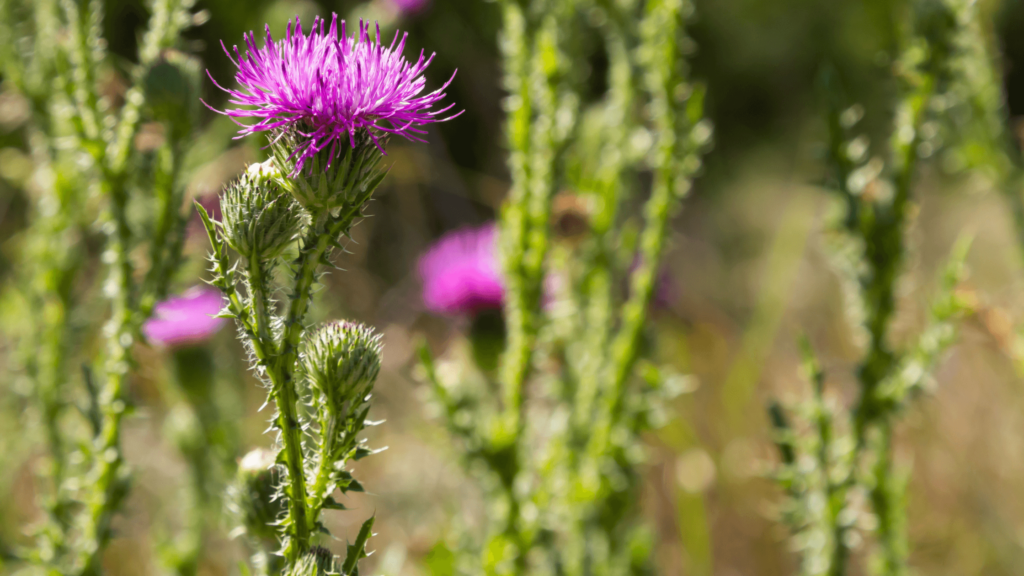
Milk thistle is another herb used to promote liver detoxification. Thanks to its active compound, silymarin, it acts as a barrier for substances that often damage the liver, such as alcohol, medications, and pollutants.
- The science: Silymarin is a potent antioxidant that has been extensively researched for its protective properties. It strengthens the walls of the liver, making it more difficult for harmful substances to penetrate. A 2000 evidence report shows that milk thistle also promotes liver healing. It repairs damaged cells and encourages the growth of new liver cells after damage occurs.
- How to incorporate it into your routine: Milk thistle is often taken in tablet form, but you can also add milk thistle tincture to your tea.
- Precautions: Keep in mind that milk thistle puts you at risk of gastrointestinal problems like bloating, flatulence, nausea, and a general change in bowel routine. It could also cause headaches or skin reactions if used topically.
4. Turmeric
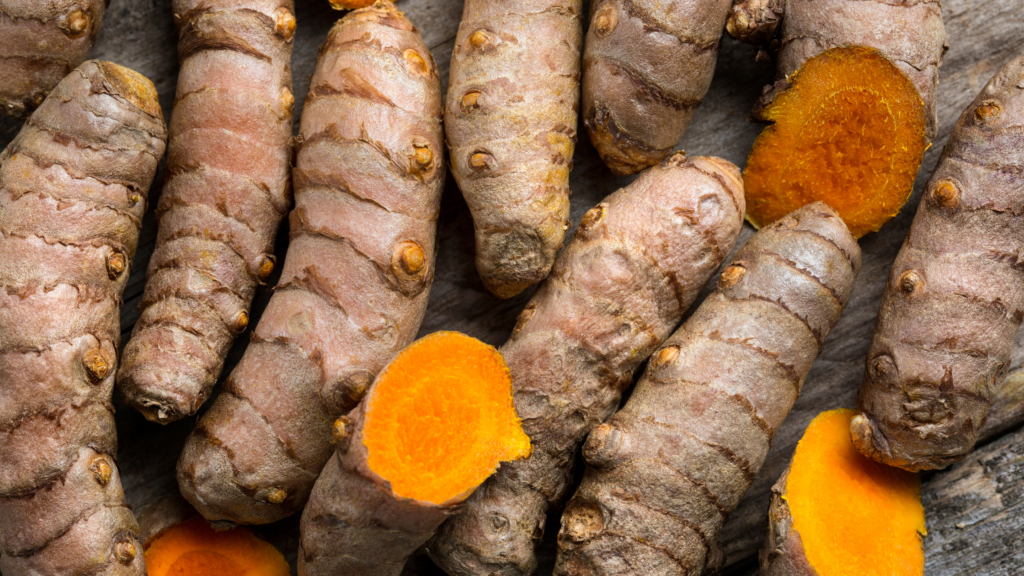
Perhaps one of the most common additions to an herbal list, turmeric is a root that’s part of the ginger family and has many powerful health-promoting properties. The main component, curcumin, is an effective phytochemical that gives it a bright yellow color and stimulates bile production by the gallbladder. Bile eliminates toxins and rejuvenates cells in the liver that break down harmful substances.
- The science: Curcumin is known for its antioxidative and anti-inflammatory properties. Some research suggests it may support the detoxification of carcinogens.
- How to incorporate it into your routine: Turmeric can be used in grains, soups, eggs, pasta, beans, and many sautés and stir-fries. To get the maximum health benefit, you need more than a pinch of turmeric, so use it generously in your cooking or opt for a tablet.
- Precautions: Turmeric is generally safe, but when taken in large doses in capsules and pills, it can cause stomach ulcers or diarrhea. If you have kidney disease, gallstones, bleeding, or immune disorders, consult your doctor before increasing your turmeric intake.
5. Burdock root
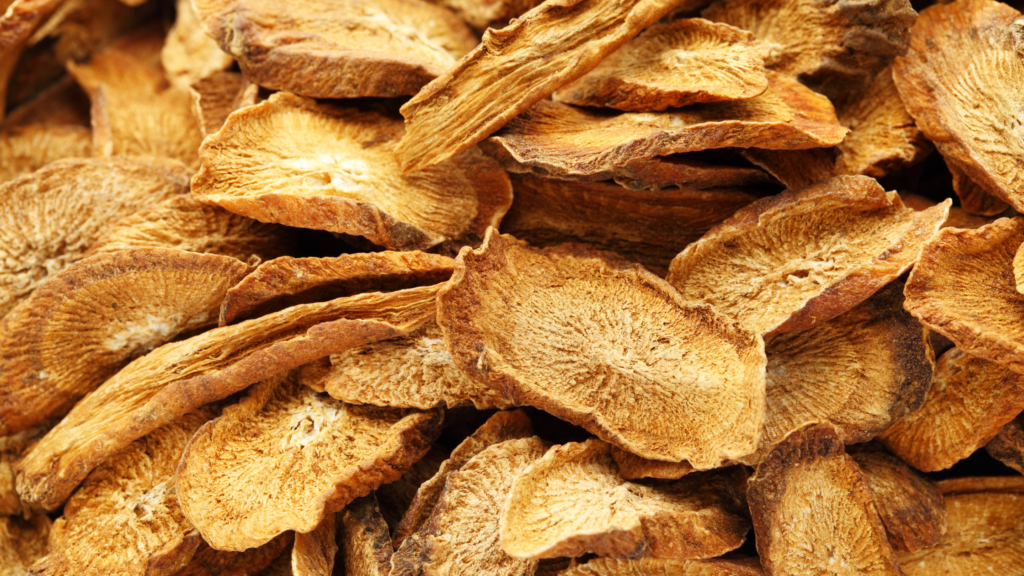
Burdock root (Arctium lappa) is another potent herb used as a blood purifier. It assists the body in eliminating toxins in numerous ways. It has anti-inflammatory, antioxidant, and antibacterial effects and contains phenolic acids, quercetin, and luteolin—all powerful antioxidants.
- The science: Research shows that burdock root can unleash stored toxins in the body. When the liver processes toxins and begins removal, burdock spurs the process. It also aids your body in toxic removal via urine. Burdock root also has anti-inflammatory and antibacterial properties.
- How to incorporate it into your routine: You can increase your burdock root intake via tea or by adding fresh burdock root to stews and soups.
- Precautions: If you have allergies or sensitivities, taking burdock root can cause dehydration, temporary bloating, and irritation.
6. Red clover
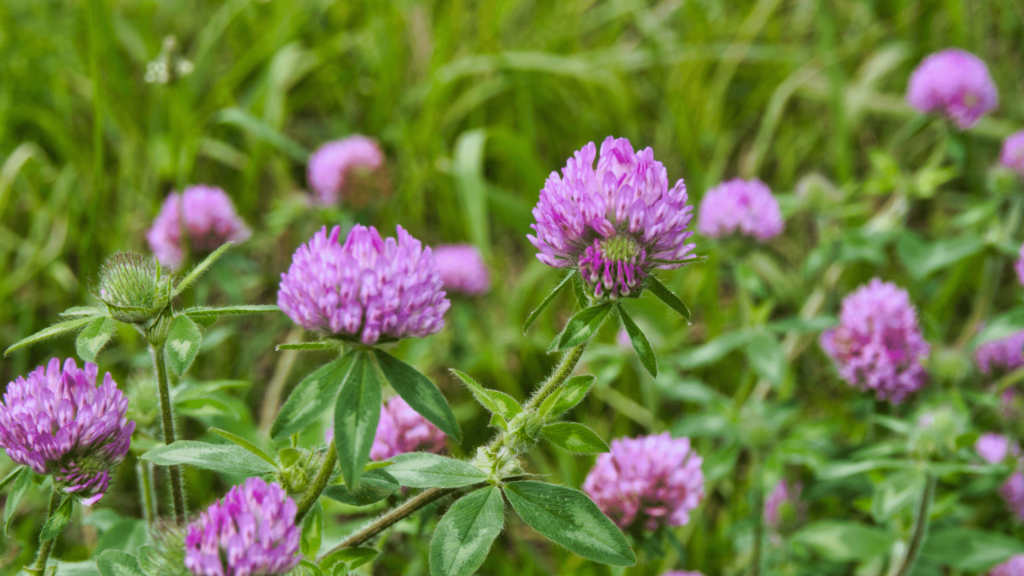
Red clover is an equally gentle and powerful herb known for boosting blood circulation and improving your body’s natural toxin elimination pathways.
- The science: Red clover increases efficient blood flow to transport toxins to the liver and kidneys. It also improves the lymphatic system, which moves lymph (a fluid containing toxins) throughout the body for elimination. By encouraging adequate lymphatic drainage, red clover helps lower the strain on other detoxification routes in the body. A 2021 study also found that clover can effectively relieve inflammatory menopausal symptoms like hot flashes.
- How to incorporate it into your routine: Red clover can be used as a tincture or capsule but is most often consumed through tea.
- Precautions: Side effects could include nausea, rash, and headaches.
7. Stinging nettle
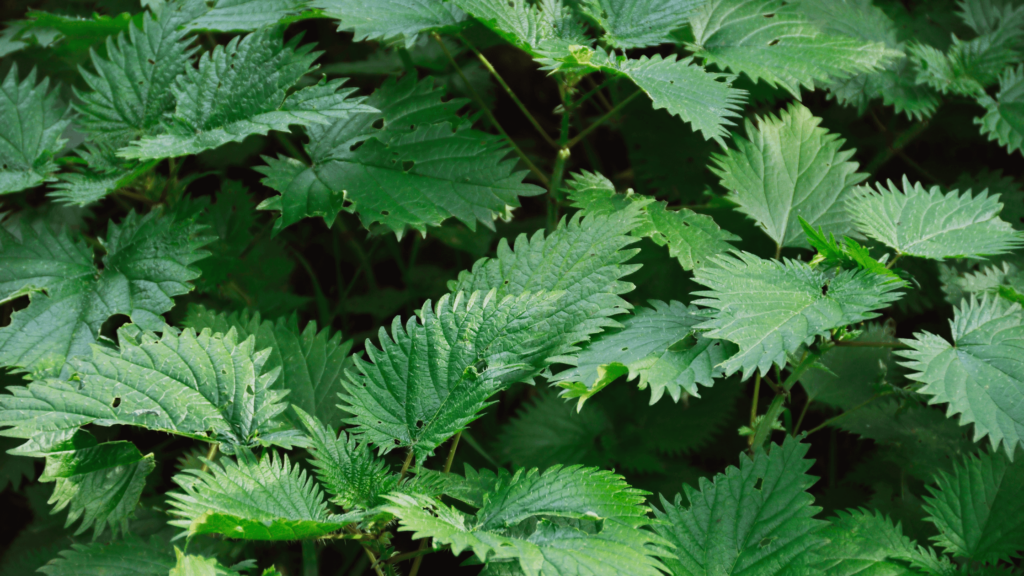
Like dandelion, the stinging nettle is most commonly regarded as a weed. In reality, nettle can support skin health, joint health, and many other body parts.
- The science: Nettle is studied widely and found to have anti-inflammatory, antioxidant, antiproliferative, anti-infectious, hypotensive, and anti-ulcer properties. Stinging nettle is known as the mother of spring tonics, and the leaves topical application can provide physical benefits like improved joint health.
- How to incorporate it into your routine: You can eat the herb in curry or soup or apply it topically.
- Precautions: However, you should avoid stinging nettle if you are pregnant, breastfeeding, diabetic, or have skin sensitivities.
8. Schisandra
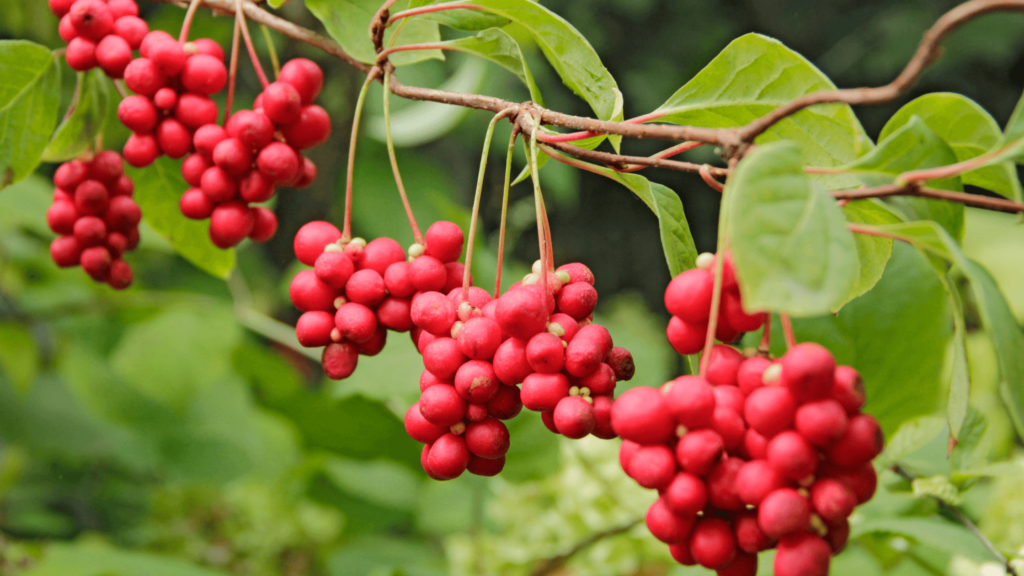
Schisandra is a berry commonly known as the “five-flavor fruit” or wǔ wèi zi. According to traditional Chinese medicine, it’s the only fruit with all five tastes: sweet, sour, salty, pungent, and bitter. It’s commonly used to treat liver conditions and stomach disorders and as a tonic to improve vitality.
- The science: Each taste has a corresponding therapeutic benefit, and as a whole, it is said to replenish the body’s vital energy. Extensive research also illustrates its liver-supporting properties. A 2019 study also reveals Schisandra as an anti-diabetic and anti-cancer herb.
- How to incorporate it into your routine: Mix the dried fruit extract in water to create a tincture, or consume up to 3 grams of the berry daily.
- Precautions: Avoid consuming shisandra if you’re pregnant or breastfeeding. It’s said to stimulate the uterus, and the evidence of whether or not it affects your breastmilk is inconclusive. You should also avoid Schisandra if you have GERD, peptic ulcers, or increased pressure in the brain.
Other ways to support detoxification
Herbs for detoxification are just one way to support your body’s natural processes. Here are some other methods to incorporate regularly to support your body’s abilities to cleanse and restore balance.
- Step in the sauna: Sauna detoxification is an effective way to rid the body of toxins. Encouraging sweat production is also said to be good for your immune system, improve your skin, and encourage your organs to release toxins.
- Sweat: Physical exercise encourages detoxification through sweating and promotes kidney and liver health. It supports the body’s natural defense processes and stimulates regular lymphatic system function.
- Eat well: Eating a balanced diet high in vitamins and minerals and including foods rich in peptides and prebiotics helps keep your detoxification systems working optimally. Key foods to aid detoxification include leafy greens, cruciferous vegetables, tomatoes, berries, and prebiotic-rich foods like artichokes and tomatoes.
- Hydrate: Proper hydration is one of the most crucial steps for encouraging regular detoxification. Drinking plenty of water promotes healthy organ function and allows your body to detox naturally.
Bottom line
Detoxification doesn’t have to be the drastic process people know it to be. There are ways to promote a reasonable detox via herbs that don’t require gimmicks, tricks, or unnecessary force on the body. Talk to your healthcare provider about how herbs like red clover, dandelion, milk thistle, and stinging nettle could improve your body’s natural detoxification processes. You’ll feel lighter and more energetic, and you’ll be doing your body a favor.
Like this post and want more? Subscribe to our weekly newsletter for the latest in herbal magic and wellness delivered directly to your inbox.
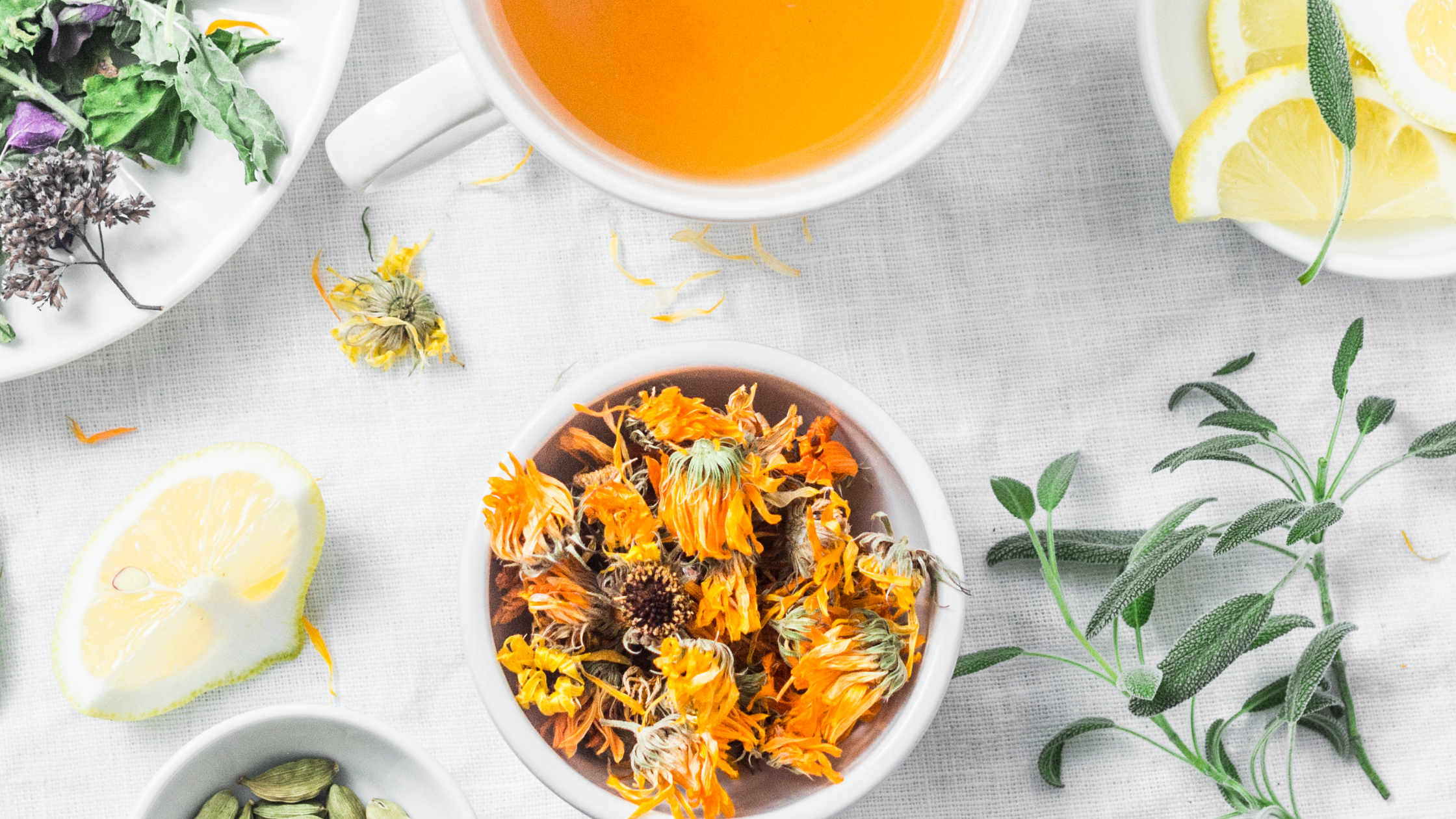


1 comment